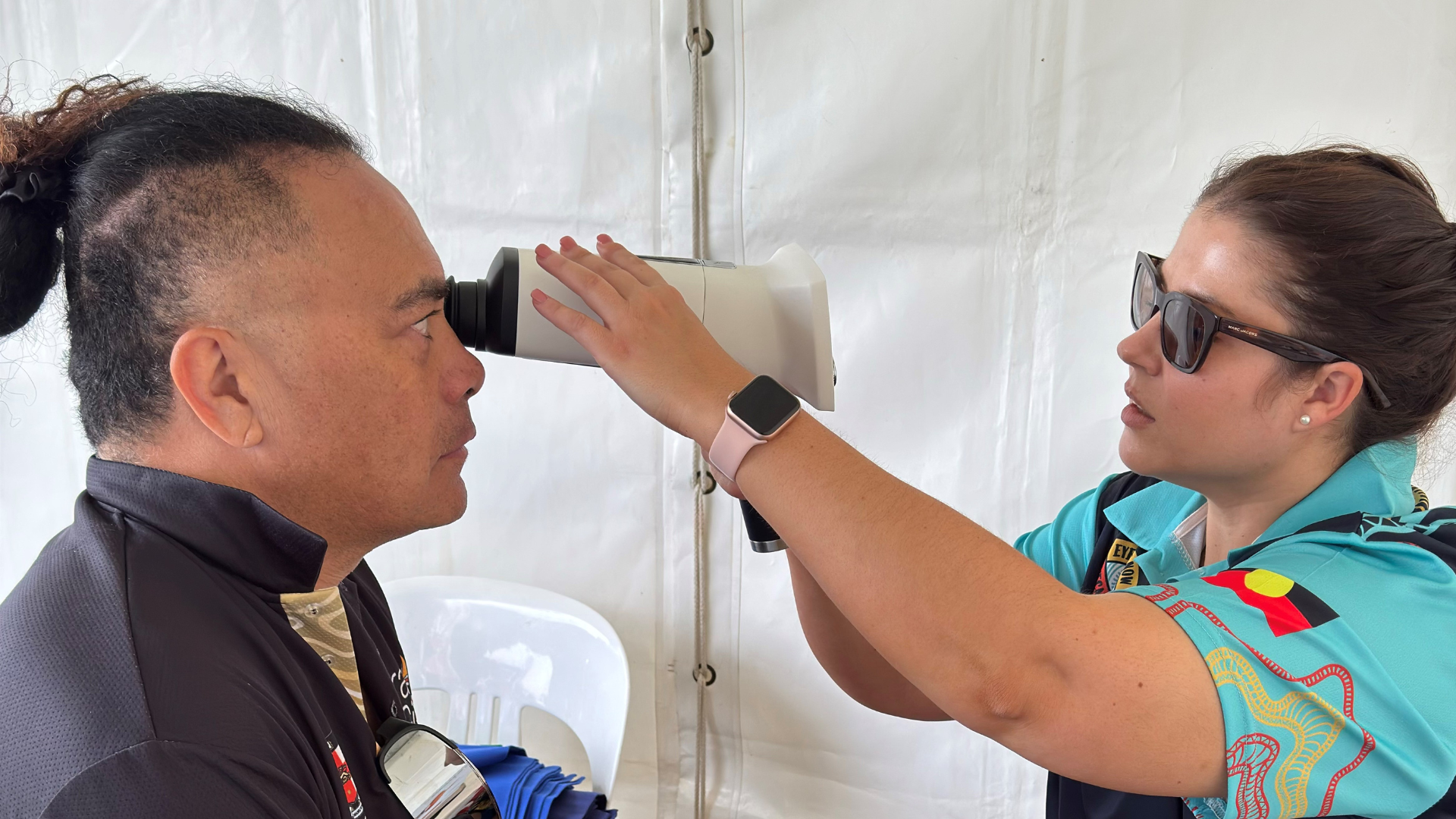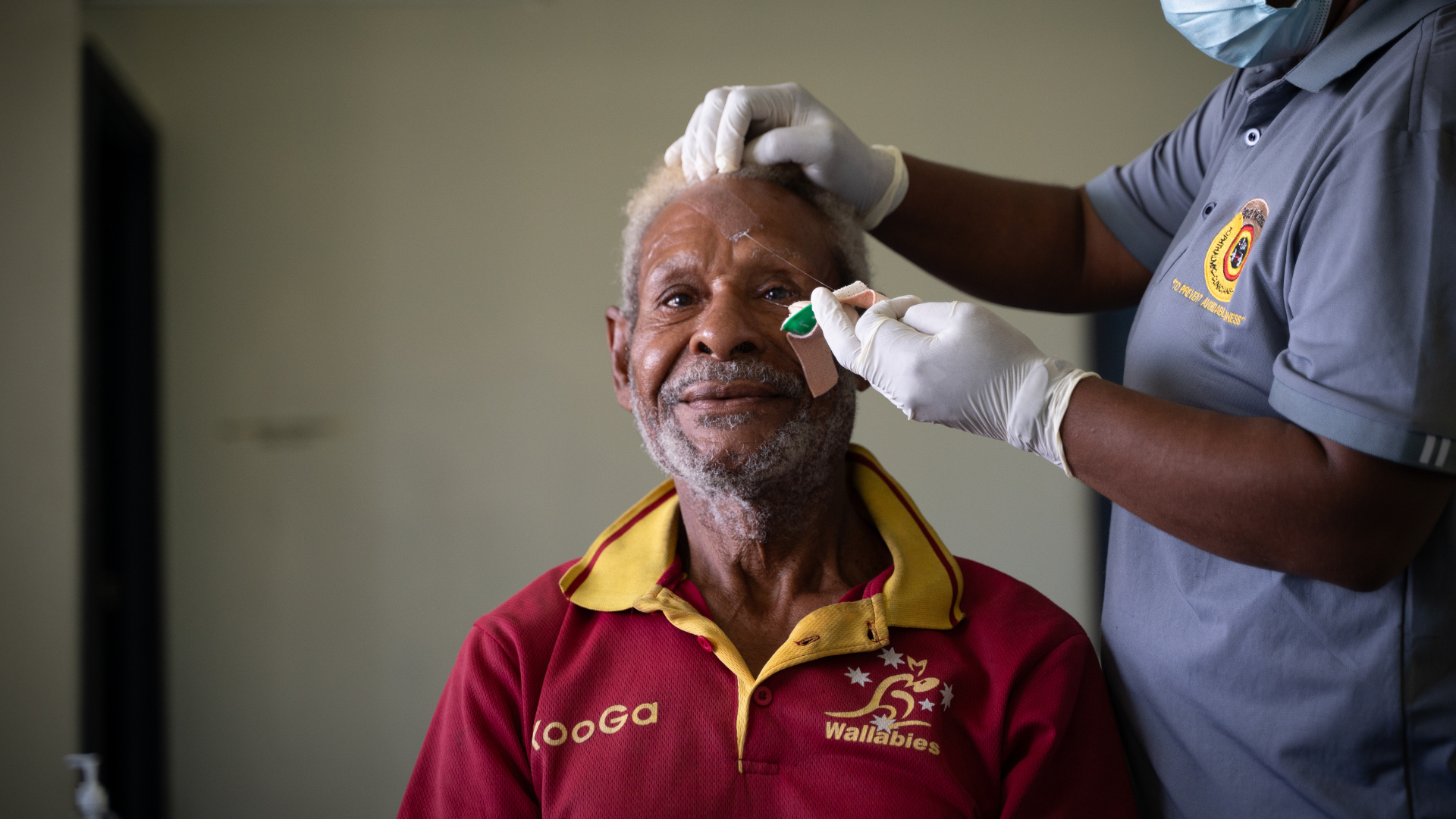Eye health
What is 20/20 Vision?

You may have heard the phrase 20/20 vision being used to describe perfect vision or normal vision. But what does this really mean?
How well you see is known as visual acuity. Visual acuity is measured on a Snellen chart, with 20/20 being considered normal vision.
A Snellen chart consists of rows of letters, with each row getting progressively smaller in size. To qualify as having normal or 20/20 vision, a person must be able to see the smallest row of letters at 20 feet (6 metres) as labelled on the chart
How well you see is known as visual acuity. Visual acuity is measured on a Snellen chart, with 20/20 being considered normal vision.
A Snellen chart consists of rows of letters, with each row getting progressively smaller in size. To qualify as having normal or 20/20 vision, a person must be able to see the smallest row of letters at 20 feet (6 metres) as labelled on the chart
COVER PHOTO: Aildrene Tan
In a hurry?
Click on the link below to go directly to the question you want answered:
- What does 20/20 vision mean?
- What does 6/6 vision mean?
- Is it possible to have an eagle eye?
- At what vision do I need glasses?
- At what vision is legal blindness
1. What does 20/20 vision mean?
20/20 vision refers to nor mal visual acuity at a distance of 20 feet. This means that you are able to see an object with clarity and sharpness at that distance.
If you have 20/40 vision, it means that you must be as close as 20 feet to see what a person with normal vision can see at 40 feet (12 metres). And if you have 20/100 vision, then you see at 20 feet what someone with normal vision sees at 100 feet (30.5m).
If you have 20/40 vision, it means that you must be as close as 20 feet to see what a person with normal vision can see at 40 feet (12 metres). And if you have 20/100 vision, then you see at 20 feet what someone with normal vision sees at 100 feet (30.5m).

Photographer: Lannon Harley
2. What does 6/6 vision mean?
In Australia and New Zealand the metric measurement system is used, so visual acuity is measured in metres, not feet, which is an imperial measurement.
Instead of 20/20 vision, normal vision is measured as 6/6 – someone with normal vision will be able to read the smallest row of letters on a Snellen chart from a distance of 6 metres.
Instead of 20/20 vision, normal vision is measured as 6/6 – someone with normal vision will be able to read the smallest row of letters on a Snellen chart from a distance of 6 metres.
3. Is it possible to have an eagle eye?
Eagle eye is a commonly known phrase used to refer to someone who is highly observant with great attention to detail. The phrase is rooted in the fact that eagles can see four or five times farther than an average human being.
Eagles have 20/5 or 20/4 vision. According to Lasik MD Vision, the best recorded vision in humans is 20/10 vision. This means the person is able to see objects clearly from 20 feet that humans with normal vision can only at 10 feet.
Eagles have 20/5 or 20/4 vision. According to Lasik MD Vision, the best recorded vision in humans is 20/10 vision. This means the person is able to see objects clearly from 20 feet that humans with normal vision can only at 10 feet.
4. At what vision do I need glasses?
If you don’t have 20/20 vision, this does not mean you need glasses. Each person is different, and you will need to have an eye test to determine whether you need eyeglasses.
Your eye health medical practitioner will be able to test your visual acuity and make recommendations based on the result.
There are several reasons you may need glasses, such as refractive errors like short-sightedness or long-sightedness, or if you spend a lot of time in front of a computer.
You may also need glasses for reading, usually after the age of 40 years for the condition called presbyopia, which is a gradual loss of your eyes’ ability to focus on nearby objects.
Your eye health medical practitioner will be able to test your visual acuity and make recommendations based on the result.
There are several reasons you may need glasses, such as refractive errors like short-sightedness or long-sightedness, or if you spend a lot of time in front of a computer.
You may also need glasses for reading, usually after the age of 40 years for the condition called presbyopia, which is a gradual loss of your eyes’ ability to focus on nearby objects.
5. At what vision is legal blindness?
A person is deemed legally blind if they have less than one tenth of normal vision in their eye(s) after any refractive errors have been fully corrected with glasses or contact lenses.
Someone with legal blindness can hardly read a sign that is six metres away, which someone with full vision can read from 60 metres (197 feet) away, or when their field of vision is less than 20 degrees in diameter.
Someone with legal blindness can hardly read a sign that is six metres away, which someone with full vision can read from 60 metres (197 feet) away, or when their field of vision is less than 20 degrees in diameter.
DISCLAIMER: The content on this page is not intended to be medical advice. For specific medical advice, please contact your health professional.
Meet the author
Related articles
View these articles

Koori Knockout raises eye health awareness among thousands on World Sight Day
World Sight Day shines a spotlight on the importance of eye care, especially for young people. This year, the Koori Knockout in Bathurst, NSW — one of the largest annual gatherings of Indigenous peoples in the southern hemisphere — served as an ideal platform for raising awareness about eye health.

Eyes on the Future: Australian and New Zealand Governments Invest in Centre for Eye Health in Papua New Guinea
The Governments of Papua New Guinea, Australia and New Zealand have partnered with one of the region’s most iconic and trusted NGOs, The Fred Hollows Foundation, by investing in a new Centre for Eye Health in Papua New Guinea’s capital Port Moresby.

Eye disease trachoma eliminated in Vietnam
The Fred Hollows Foundation has welcomed the World Health Organization’s (WHO) validation that Vietnam has eliminated the eye disease trachoma as a public health problem.
